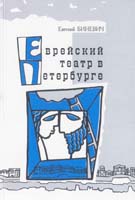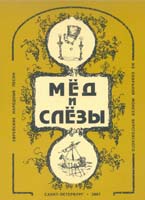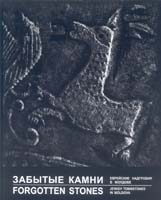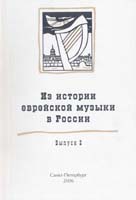
ЕВРЕЙСКИЙ ОБЩИННЫЙ ЦЕНТР САНКТ-ПЕТЕРБУРГА
Jewish History and Culture
Rolnikaite, Maria, And All This is True, St. Petersburg, 2002, 608 pp. (Russian)This two-part memoir begins with Rolnikaite’s wartime diary, I Must Tell About It, which was published for the first time in 1965, and recounts her experiences in the Vilnius ghetto and Nazi concentration camps. The second part, That Was Then, is a chronicle of the author’s life in the post-war period. |
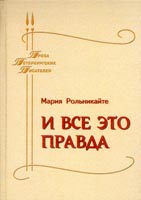 |
|
Binevich, Evgeny, Yiddish Theater in St. Petersburg: A Historical Essay, St. Petersburg, 2003, 220 pp., [16] pp. ill. (Russian)This illustrated monograph represents the first attempt at a systematic presentation of the history of Yiddish theater in St. Petersburg. The chronicle begins with the guest performances of Avraham Goldfaden’s troupe in the beginning of the 1880s and ends with the closing of the last Jewish amateur theater studio in Leningrad in the 1930s. |
Kheifets, Mikhail, The Travels of a Jewish Photographer, St. Petersburg, 2003, [84] pp., ill. (Parallel texts in Russian and English)After spending a decade traveling from one end to the other of “one sixth of the Earth’s surface,” as they used to call the USSR, St. Petersburg photographer Mikhail Kheifets created a unique photographic record of Jewish life in the region. This beautifully printed album presents images selected from that record. |
 |
|
Honey and Tears: Yiddish folk songs from Moyshe Beregovsky’s collection, Transl. from Yiddish by Elena Baevskaya and Mikhail Yasnov, Illustr. by Gennady Karabinsky, St. Petersburg, 2007, 180 pp., ill. (Russian; parallel lyrics in Yiddish and Russian)The unique compilation of 25 folk songs includes lyrical, everyday, satirical, and children’s songs, which were selected from the collection of the outstanding Jewish musicologist and folklorist Moyshe Beregovsky (1892–1961). Original song texts in Yiddish are printed alongside poetic Russian translations, and the musical supplement provides the opportunity to sing the texts, as well as read them. Elegant illustrations give this edition an especially impressive character. |
Kopytova, Galina, The Jewish Folk Music Society in Petersburg-Petrograd, St. Petersburg, 1997, 72 pp., ill. (Russian)The Jewish Folk Music Society was active in St. Petersburg from 1908 to 1919, and laid the foundation for the Jewish national (ethnic) school of composition. The book presents a history of the Society and a complete bibliography of its publications. |
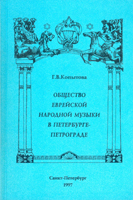 |
|
Goberman, David, Forgotten Stones: Jewish Tombstones in Moldova, St. Petersburg, 2000, 160 pp., ill. (Parallel texts in Russian and English)After years of studying Jewish carved steles, the author, himself an artist and art scholar, now presents a collection of unique photographs of original artwork by Jewish stone carvers from the 18th to early 20th centuries. Most of the monuments pictured in the album no longer stand. |
On the History of Jewish Music in Russia: Proceedings of the International Scientific Conference, “90 years of the Jewish Folk Music Society in Petersburg-Petrograd (1908–1919),” St. Petersburg, 27 October 1998, Compiled by Leonid Guralnik, St. Petersburg, 2001, 176 pp., [10] pp. ill. (Russian with English abstracts)This collection of scholarly writings on the history of the Jewish Folk Music Society also includes articles about more general historical and theoretical questions of Jewish music, its national (ethnic) originality, and identification. The full text of the famous 1915–1917 newspaper polemic between Joel Engel and Lazare Saminsky is published here for the first time. |
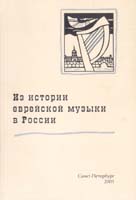 |
|
On the History of Jewish Music in Russia. Vol. 2: Proceedings of the International Scientific Conference, “Jewish Professional Music in Russia. Its Formation and Development,” St. Petersburg, 1–2 December 2003, Compiled by Galina Kopytova and Alexander Frenkel, St. Petersburg, 2006, 376 pp., [8] pp. ill. (Russian with English abstracts)This collection of scholarly articles is dedicated to the memory of composer Moisei Milner (1882–1953), an exceptional master of Jewish music in the Soviet Union. The collection includes articles about Milner’s life and works, as well as articles on the history of the Jewish Folk Music Society and its impact on the further development of the Jewish national (ethnic) school of music.
|
